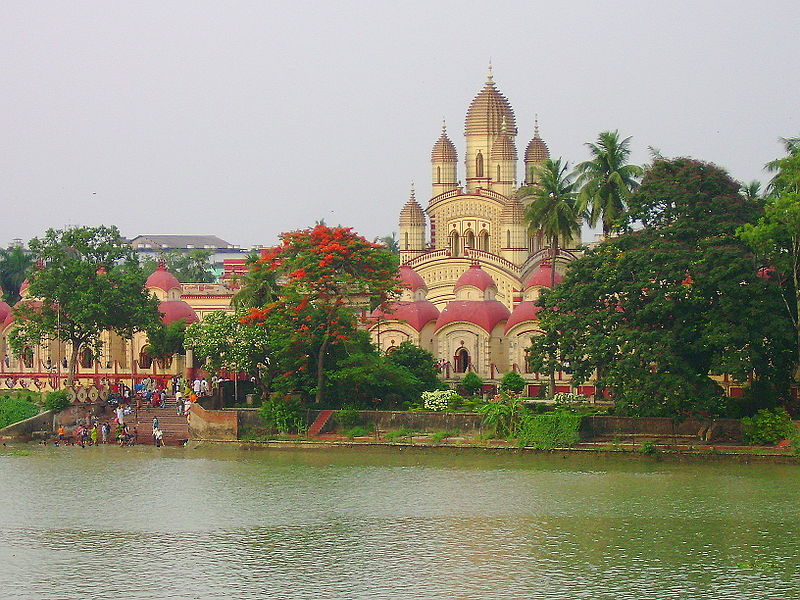
Rani Rashmoni statue at the Esplanade, Kolkata (cc) Wikimedia Commons
India’s independence struggle is a long, hard struggle filled with many heroes and some heroines who have attained almost mythical status in the decades that have since passed. However, it is easy to forget that many acts of individual courage and small victories led to the massive success on Aug 15, 1947.
Here is one such individual and victory that I had never read about in any history book (side note: why, oh why are history textbooks filled with kings, wars and dates and not stories such as the one below?)
…There were many Bengalis of determined character who were not afraid to challenge the authority of the foreigners and make themselves respected by them.
Such a one was a lady named Rani Rasmani (She was not really a Rani – that is the wife of a Raja; this was merely a nickname which had been given her by her mother in childhood. When she grew up, people went on calling her ‘Rani’ in recognition of her royally benevolent and commanding nature) … She was well known throughout the city (Calcutta) and highly popular because of her generosity, courage, and piety …
On one occasion, it is related, the British Government imposed a tax on all fish caught in the Hoogli – the most important, commercially, of the mouths of the Ganges. Many of the fishermen who were impoverished by this tax lived on the Rani’s land, so they came and complained to her. The Rani told them not to worry and immediately went into action. For a large sum, she obtained a monopoly of the fishing-rights. The British agreed to this agreement, supposing that the Rani planned to open a fishery and thereby supply them with tax-revenue without the difficulties of tax-collection from a large number of people. But no sooner had the Rani obtained the rights, then she had chains hung across the river in several places, holding up shipping. When the British protested, she replied: ‘I bought these fishing-rights from you at great expense. If I now let ships pass up and down the river, they will frighten the fish and I shall lose a lot of money. However, if you’ll agree to abolish your new tax, I’m ready to give up my rights. If you won’t, I shall sue you in the courts, and you’ll have to pay me damages.’ The British had the good sense to recognize – with humour, one hopes – that they had met their match. The tax was abolished.
(from Ramakrishna and His Disciples by Christopher Isherwood pg 40)
Rani Rashmoni is a path-breaking revolutionary in many ways.
There was this – born in a poor, lower caste family in 1793; married at 11; widowed soon after; ran her husband’s zamindari so well that its riches and prestige grew manifold…
Then there was this – Proved herself to be an excellent leader and administrator; was respected even by her adversaries (as the above story amply demonstrates); managed to hold her own in various clashes with the British rulers of the time…
And finally there is this – Interested in social reform and spirituality; donated generously to Imperial Library and Hindu College; built Babughat, Ahirtola Ghat and Nimtola Ghat for the convenience of those who wanted a dip in the Ganges; and (icing on the cake, shall we say ;)) envisioned and constructed Dakshineswar Kali Temple in 1855; appointed Ramakrishna Paramahamsa as the chief priest; provided location and support for the beginnings of Ramakrishna Mission…
So many accomplishments in so many different areas of life. Rani Rashmoni is in every way an inspiration and role model for anyone who is trying to break barriers in any society. (And, we really need to revise those history text books :-P)
Sources:
- Rani Rashmoni page on Wikipedia
- Rani Rashmoni page on Dakshineswar Kali Temple website
- Ramakrishna and His Disciples by Christopher Isherwood

Dakshineswar Kali Temple, built by Rani Rashmoni in 1855 (cc) Wikimedia Commons
